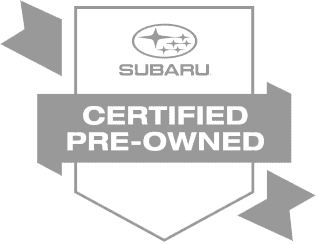If you are used to do-it-yourself maintenance, some of today's computerized controls may not make possible problems as obvious to you as they were in the past. That's why preventative diagnosis is so important to keep your Subaru running trouble-free for years.
If you detect a change in your car's performance, however, call your Subaru technician right away!
- Hard Starting. The most common car trouble, usually due to neglected maintenance. If the starter cranks the engine, the electrical system is probably okay. The problem could be as simple as a starting sensor (or the choke mechanism if applicable).
- Knocking. A noise usually heard when the engine is "under load," like during acceleration or climbing a hill. It can be caused by inferior fuel, but is often a sign your engine needs attention. Many cars now have knock sensors built in to correct minor problems, but they can't compensate for larger malfunctions that could result in engine damage.
- Rough Running. This can be caused by a problem in the fuel or ignition system, or by a troubled valve or piston. Tell your technician when it occurs: When idling? During acceleration? At all speeds?
- Poor Gas Mileage. Keep track of your mileage. Changes may be due to underinflated tires, engine running too cold, transmission malfunction, dragging brakes or misaligned wheels.
- Stalling. Causes can include incorrect idle speed, adjustments, malfunctioning sensor or switch, dirty fuel system parts, worn spark plugs or other engine deficiencies. Take note: Does the engine stall when hot? Cold? With air conditioning on?
- Dieseling. Also known as "after-run." The engine keeps chugging and coughing for a few seconds after you shut off the ignition. Causes can range from inferior gasoline and high idle speed to carbon in the combustion chamber.
- Power Loss. A dirty fuel filter commonly causes power loss. Preventative maintenance can help.
Don't Ignore Small Warning Signs! Take preventative measures before there are problems. Call your Secor Subaru Service Advisor when it's tune-up time.
Car Care Tips
We all know that tires wear. There are certain things you, as an owner, can do to help minimize this wear.
Keep your tires properly inflated. This is perhaps the single most important thing you can do. Information on correct tire inflation pressure is provided in your owner's manual and on a placard on the driver's door pillar. How often you check your tire inflation is up to you. As a rule of thumb, tires should be checked every time you fill your car with gas. Remember that tires should be checked when cold since tire pressure will increase as the tires warm up.
Rotate your tires regularly. SUBARU
recommends tires should be rotated every 7,500 miles. These are recommended
intervals only. Your actual driving conditions may warrant more frequent
rotation. Factors such as road surfaces, driving techniques/habits, vehicle
loading, and weather, to name just a few, can all have an effect on tire
wear.
Tire Replacement. The wheels and tires are important and integral parts of your vehicle's design; they cannot be changed arbitrarily. The tires fitted as standard equipment are optimally matched to the characteristics of the vehicle and were selected to give the best possible combination of running performance, ride comfort, and service life. It is essential for every tire to have a size and construction as well as a speed symbol and load index matching those shown on the tire placard. Using tires of a non-specified size detracts from controllability, ride comfort, braking performance and speedometer and odometer accuracy. It also creates incorrect body-to-tire clearances and inappropriately changes the vehicle's ground clearance. All four tires must be the same in terms of manufacturer, brand (tread pattern), construction, and size. You are advised to replace the tires with new ones that are identical to those fitted as standard equipment. For safe vehicle operation, SUBARU recommends replacing all four tires at the same time.
WARNING:All four tires must be the same in terms of manufacturer, brand (tread pattern), construction, degree of wear, speed symbol, load index and size. Mixing tires of different types, sizes or degrees of wear can result in damage to the vehicle's power train. Use of different types or sizes of tires can also dangerously reduce controllability and braking performance and can lead to an accident. Use only radial tires. Do not use radial tires together with belted bias tires and/or bias-ply tires. Doing so can dangerously reduce controllability which can result in an accident.


- Oil and Filter. Fresh filters help provide better fuel economy, smoother running and optimum power. Oil is your engine's lifeblood. It is extremely important that the engine oil and filter be changed regularly, and especially before a long trip. Change the oil and oil filter according to the maintenance schedule in the Subaru Warranty and Maintenance Booklet.
- Tires. To extend tire life, keep wear uniform, and help ensure that you don't get stranded at the roadside, have your car's tires rotated if they haven't been within the last 7,500 miles. Any unevenly worn or damaged tires should be replaced. Also, check and adjust your tire pressure according to the tire placard on the inside driver's door frame for the best fuel economy, ride comfort and handling.
- Cooling system. A properly functioning cooling system is critical to engine operation. It is recommended that the cooling system and hose connections be checked frequently for leaks, damage or looseness.
- Your best bet. Consider taking advantage of the 25-point Vehicle Inspection. A Subaru-trained technician will perform a thorough, multi-point inspection of your Subaru, paying special attention to safety and maintenance items.

"It is important that shocks and struts are in top condition during the summer months," says James Plogger, vice president of sales for Gabriel Ride Control Products, Inc. "It is recommended that vehicle owners have their vehicles' ride control systems checked by an ASE certified service technician."
How They Work
Shocks provide resistance by forcing hydraulic fluid (oil) through valves in the piston as it moves up and down. Because the oil cannot be compressed, only a certain amount of fluid can be forced through these valves, which creates resistance to the vehicle movement.
How to Tell if Shocks and Struts Need Replacement
Under normal conditions, shocks and struts wear out gradually. However, many factors can affect how much wear is actually occurring and at what rate it is occurring.
"For example, two people buy the same vehicle new off the dealer lot -- one lives in the city close to the office, and drives mostly on straight roads. The other lives in the country, 45 miles from the office and must travel 10 of those miles on a winding, often muddy gravel road. Because shocks operate in an extremely hostile under-vehicle environment, where anything from gravel to ice, and snow to grit can affect the life of the product, it is a good bet that driver number two will need to replace his shocks long before driver number one," explains Plogger.
The piston rod can easily be nicked or damaged by flying gravel allowing grit and dirt to damage the piston seal.
Among signs of worn shocks or struts:
Do you experience excessive bounce (three or more bounces) when crossing an intersection? When stopping quickly does your vehicle rock back and forth? While applying your brakes firmly at higher speeds, does your vehicle drift left or right? When changing lanes quickly does your vehicle rock or sway from side to side?
Many components contribute to handling. Having your vehicle inspected by a Subaru Certified Technician if you experience any of the above signs is good preventive maintenance.

A couple of years have passed since you had your Subaru tuned up. But is it really running smoothly? As you drive each day, observe any changes in its performance. There may be good reasons to get a tune-up sooner than you think.
If you are used to do-it-yourself maintenance, some of today's computerized controls may not make possible problems as obvious to you as they were in the past. That's why preventative diagnosis is so important to keep your Subaru running trouble-free for years.
If you detect a change in your car's performance, however, call your Subaru technician right away!
- Hard Starting. The most common car trouble, usually due to neglected maintenance. If the starter cranks the engine, the electrical system is probably okay. The problem could be as simple as a starting sensor (or the choke mechanism if applicable).
- Knocking. A noise usually heard when the engine is "under load," like during acceleration or climbing a hill. It can be caused by inferior fuel, but is often a sign your engine needs attention. Many cars now have knock sensors built in to correct minor problems, but they can't compensate for larger malfunctions that could result in engine damage.
- Rough Running. This can be caused by a problem in the fuel or ignition system, or by a troubled valve or piston. Tell your technician when it occurs: When idling? During acceleration? At all speeds?
- Poor Gas Mileage. Keep track of your mileage. Changes may be due to underinflated tires, engine running too cold, transmission malfunction, dragging brakes or misaligned wheels.
- Stalling. Causes can include incorrect idle speed, adjustments, malfunctioning sensor or switch, dirty fuel system parts, worn spark plugs or other engine deficiencies. Take note: Does the engine stall when hot? Cold? With air conditioning on?
- Dieseling. Also known as "after-run." The engine keeps chugging and coughing for a few seconds after you shut off the ignition. Causes can range from inferior gasoline and high idle speed to carbon in the combustion chamber.
- Power Loss. A dirty fuel filter commonly causes power loss. Preventative maintenance can help.
Don't Ignore Small Warning Signs! Take preventative measures before there are problems. Call your Secor Subaru Service Advisor when it's tune-up time.

Oil Filters
Motor oil circulates through your engine to lubricate all the moving parts. Along the way, dirt, grit and fine metallic and carbon particles contaminate motor oil and, if improperly filtered out, may ruin your engine. Today's high-detergent oils are formulated to suspend contaminants until they can be effectively trapped by the oil filter. Regularly changed oil filters protect your engine by removing the suspended particles from your motor oil.
Fuel Filters
Today's sophisticated fuel injection systems demand clean fuel in order to run smoothly. From the gas tank to your engine, fuel can pick up contaminants like dirt and condensation. If these contaminants are not properly filtered out they will cause reduced engine performance, rough idling and may eventually damage the sensitive fuel injection components. Fuel filters changed using the recommended maintenance schedule can help you avoid expensive repairs.
Air Filters
Your engine needs a great deal of air to run properly. If air is not properly filtered, dust and other suspended particles get into the combustion chamber where they may become lodged between the piston and cylinder wall, causing wear. This may result in loss of acceleration, decreased power and lower gas mileage.
Remember, ALWAYS insist on genuine Subaru Filters - your best defense against the most abusive elements.

Before checking, always stop the engine, remove the key from the ignition switch, set the parking brake and let the engine cool down completely. Take care not to spill any engine oil, engine coolant, brake fluid or any other fluid on hot engine components.
Use your Owner's Manual as a guide for more details and to locate specific engine parts.
Engine Oil
When: Every Fuel Stop. Park your Subaru on a level surface and stop the engine. Pull out the dipstick, wipe it clean, and insert it again until it stops. Pull out the dipstick again and check the oil level on it. If it is below the lower level, add oil to bring it up to the upper level. Important: Use only engine oil with the grade and viscosity recommended in your Owner's Manual.
Coolant
When: Every Fuel Stop. Check your car's coolant level on the outside of the reservoir while the engine is cool. If the level is close to or lower than the "LOW" mark, add coolant up to the "FULL" mark. If the reserve tank is empty, remove the radiator cap (Do not open when the radiator is hot!) and refill as required. After filling the reserve tank and the radiator, reinstall the caps and check that the rubber gasket inside the radiator cap is in the proper position. Important: Use the coolant recommended in your Owner's Manual only. Use of other coolants may result in corrosion.
Automatic Transmission Fluid
When: Monthly. (Automatic transmission equipped models only.) Drive several miles to raise the temperature of your car's transmission fluid up to normal operating temperatures (140 to 176 degrees is normal). Park on a level surface and set the parking brake. Shift the selector level in each position. Then shift it in the "P" position, and run the engine at idling speed. Pull out the dipstick and check the fluid level on the gauge. If it is below the lower level on the "HOT" side, add the recommended automatic transmission fluid up to the upper level. Important: If you don't have time to warm up the automatic transmission, check to see that the fluid level is between the lower level and the upper level on the "COLD" side. If it is below that range, add fluid up to the upper level. Be careful not to overfill.
Manual Transmission Oil
When: Monthly. (Manual transmission equipped models only.) Park your Subaru on a level surface and stop the engine. Pull out the dipstick, wipe it clean, and insert it again. Pull out the dipstick again and check the oil level on it. If it is below the lower level, add oil to bring the level back up to the upper level.
Brake Fluid
When: Monthly. Check the fluid level on the outside of the reservoir. If the level is below "MIN," add the recommended brake fluid to "MAX." Important: Use only brake fluid from a sealed container. Never mix different brands of brake fluid together. Brake fluid absorbs moisture from the air. Any absorbed moisture can cause a dangerous loss of braking performance. Take care not to splash brake fluid over any painted surfaces or rubber parts, as damage may result. If your vehicle requires frequent refilling, there may be a leak. Have the vehicle checked at your Subaru dealership.

It is extremely important to have your car's battery checked by a Subaru-trained technician regularly. A battery check will include an examination of cable connections for cleanliness and tightness. Loose or corroded connections can dramatically diminish your car's starting power; and if the connections grow loose or crusty enough, they can shut off your car's electrical flow entirely and leave you thinking you have a dead battery.
High temperatures also reduce the efficiency at which a battery is recharged.
New England driving conditions frequently require the use of A/C for extended periods while driving at slow speeds. This additional load requires the charging system to work properly so that it sufficiently charges the battery the next time you start your car's engine. For this reason, your service technician should also check your battery's charging system and voltage regulator, and inspect your vehicle's alternator to ensure that all components are operating properly.

Timely maintenance does more than keep your Subaru running smoothly. It can help increase your car's trade-in value, improve its mileage, and save you time and costly repairs down the road.
- Belts. With the engine off, check your car's belts for cracks and missing pieces. To check for proper tightness, press down on the belt with your thumb. If the belt gives more than half an inch, it needs tightening.
- Hoses. When the car is cold, feel your car's hoses for bulges, cracks, soft spots or brittleness. With the engine running, look for (but don't touch) bulges or leaks. If you detect any, have the hose replaced. Note: Avoid replacing air conditioning hoses yourself. Their pressurized gases can cause serious injury.
- Coolant. Check the level of coolant in your radiator by looking at the coolant overflow tank. Maintaining a 50/50 mix of antifreeze will keep your engine cool in hot weather and prevent damage when temperatures fall as low as 40 below zero. Note: Do not remove the radiator cap until the engine is turned off and has cooled down.
- Oil. Depending on the driving conditions your Subaru is subjected to, change your oil and filter as recommended in your Owner's Manual. Also, use the recommended oil grade.
- Power Steering Fluid. To check, pull out the dipstick, wipe it clean, and insert it again. Pull it out again and check the level. If it is below the HOT range, add the recommended steering fluid up to the upper level mark. Note: If the fluid level is extremely low or fluid has been replaced, contact your Subaru dealer.
- Brake Fluid. Check the fluid level on the outside of the tank using the lines on the reservoir as a guide. If the level is below MIN, add brake fluid from a sealed container to bring it up to MAX. You'll notice a significant drop in fluid levels when there's a leak. Note: Brake fluid absorbs moisture from the air. Any absorbed moisture can cause a dangerous loss of braking performance. If your brake fluid tank requires frequent refilling, there may be a leak. Contact your Subaru dealer immediately.
- Air Filter. Again, depending on the condition of the roads traveled by your Subaru, routinely check your air filter for accumulated debris.
- Battery. Check your battery terminals regularly, removing any corrosion with a toothbrush and a mix of baking soda and water.
- Tires. Check your tire pressure (with tires cold) once a month or more. Keep tires inflated to manufacturer's recommendations, which can be found on the driver's side door frame placard and in the owner's manual.
- Wipers, Washers, Horn And Lights. Finally, be sure to check the operation of your car's wipers, windshield washers, horn and lights. Tip: Isopropyl alcohol makes wiper blade clean-up a snap!

Wipers take a beating from extreme temperatures, acid rain, road salt, sand, and ice scraper abuse. The rubber can crack, split, tear, become contaminated with road film or chemicals or warp from long exposure to heat, cold or ice. Improvements are being made in blade materials, but air pollution still takes its toll.
You can clear up many windshield problems by replacing the blades. If water beads up on the glass, or if wiper action creates a hazy, oily film, clean the glass and replace the blades. Beading and hazing are most often caused by car wax build-up or driving behind a vehicle that was losing brake fluid or engine oil. If wipers leave streaks or "skip" on each stroke, the arm may be bent or applying incorrect pressure. Blades and arms should be inspected every four to six months.
Meanwhile, every time you wash your car (weekly, hopefully), clean the rubber blade with a mild detergent and rinse with water. You'll remove most pollutants attacking the rubber, help increase blade life and reduce windshield smearing. If taking a rear wiper-equipped Subaru through a commercial car wash, temporarily tape the rear wiper to the glass to avoid damage during the wash.

How Can We Help?
* Indicates a required field
-
Secor Subaru
501 Broad St
New London, CT 06320
- Sales: (860) 442-2323








